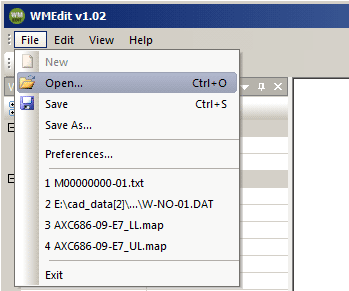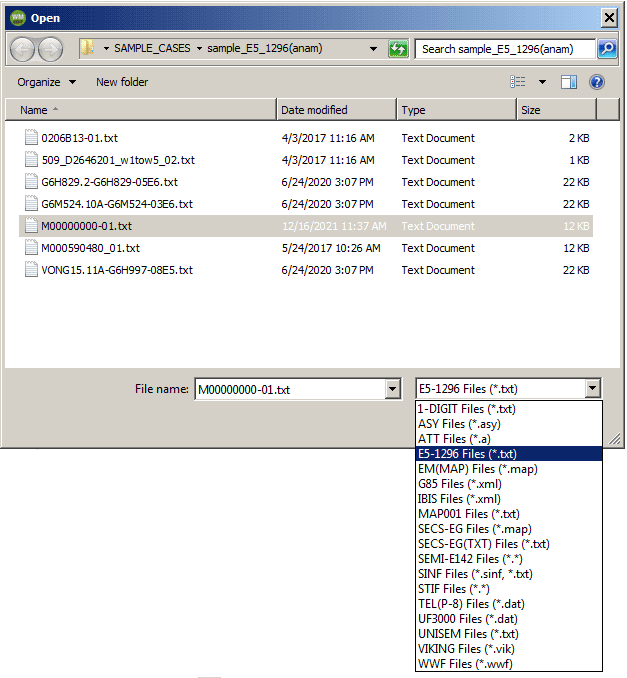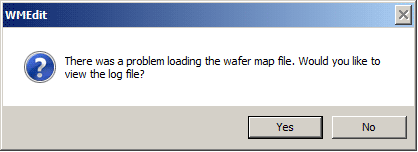

Use the File pulldown and select the menu item Open...

An Open... dialog box will appear.
Use the dialog's navigation tools to find the file you wish to open and select the file.
Use the file type drop down to select the correct wafer map format. This is IMPORTANT! The program cannot automatically determine the type of map file you are opening and depends on the user to provide that informaion.

Available Map formats
WMEdit supports a number of wafer map formats and you must pick one from the drop down menu. Some map formats are industry standards such as SEMI-E142, SEMI E5-1296, G85, SECS II. Others were created by large companies such as SINF (KLA), STIF (ST Microelectronics) and WWF (Texas Instruments). Others have no well known providence and we have named them based on what customers have told us.

Map Format not Correct
If the map format you have selected does not match the file you have selected, when you go to open it you will see this error message:
Unfortunately, vieweing the log file is not of much help.

Given the two above facts, the only way to reliably determine the map file is by inspection.
Assuming the map file is text-based, then one can open the file using a text editor and view it. Usually just looking at the header contents is sufficient to match it to a known map file format. We will be adding to this help document a table of supported map files and what they should look like in the near future.
Some map files are binary files - in that case a text editor will display gobbely-gook and viewing it that way is not of much help.
Back to the Table of Contents